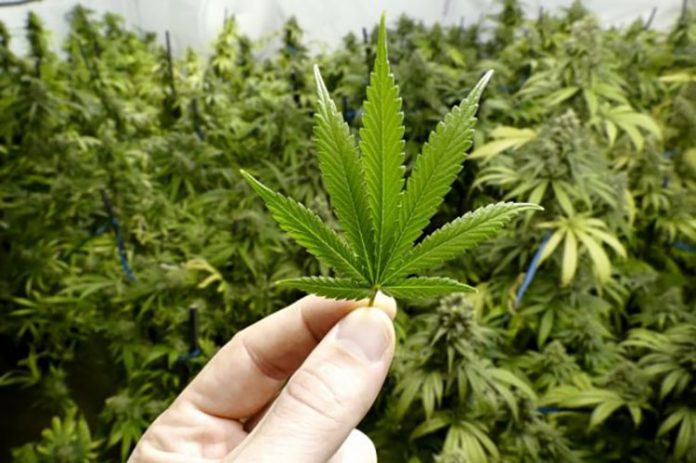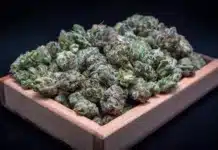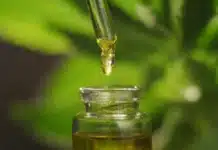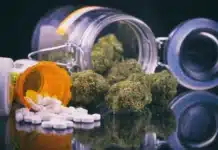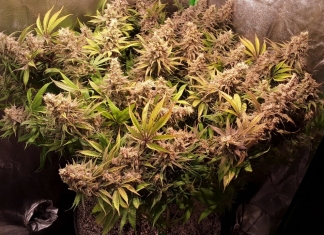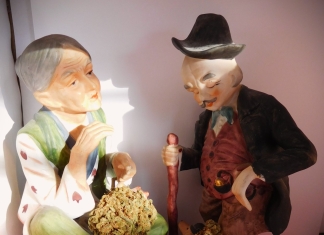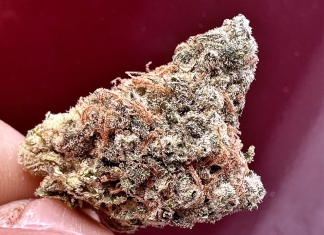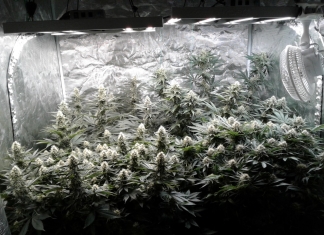Neuroprotective antioxidant. Opioid alternative. Liver disease avoidant. Cancer cell destroyer. Anxiety buster. Insomnia solution. The potential utility of cannabinoids as an alternative solution to many of our health issues is breathtaking, both in its effectiveness and for its sheer breadth. Cannabis’ potential to optimize human health is finally starting to be realized, and now that the research genie is coming out of the bottle it will be impossible to continue containing it. Medical Cannabis is now legal in 29 states, and decriminalized recreational use is starting to pick up state legislative steam as well.
The world of Medical Cannabis is as varied as it is infinite, like so many things regarding our sacred Ganja plant. From its genotypes to its turpines and trichomes, the sheer variety of different Cannabis plant strains alone can be mind-boggling! When you add the complexity of symptomatic treatments for different medical conditions, it can make trying to make informed decisions regarding these treatments difficult to say the least. What I’m hoping to do here is provide a conduit for a shared journey of discovery, where we can highlight and discuss a curated selection of contemporary medical studies, that are offering promising treatments for many different ailments.
Before we start that journey, let’s take a look at where we’ve come from. Back before it was demonized by a small cadre of special interests, Cannabis was the active ingredient in, by many estimates, over 30,000 different over-the-counter patent remedies in the United States! These special interests put “marijuana” (a convenient word used to play the race card against Mexicans) onto Schedule I of the Controlled Substance Act, as having “no medical value”. It took the citizenry quite a while before they realized that they’d been duped, that the demon weed marijuana and the Cannabis they had been using to sooth so many different ailments, were actually the same thing.
Cannabis prohibition began in 1938, and all of these relatively harmless, easy-to-access over-the-counter health remedies disappeared from the marketplace.
The U.S. Government’s “no medical value” stance is especially interesting in its recent hypocrisy: The Fed’s Schedule I designation has effectively shut down Cannabis’ medical potential for the last 80 years or so. But in the 21st century, this same government has been quietly hedging its bets. Indeed, U.S. Patent 6630507, filed on February 2, 2001 by “U.S. Health and Human Services”, “…proves medicinal value contrary to Schedule 1 drug classification by DEA. The patent lists the use of certain cannabinoids found within the Cannabis Sativa plant as useful in certain neurodegenerative diseases such as Alzheimer’s, Parkinson’s, and HIV dementia.” Now that’s some good reading!
Today, scientists all around our shared spaceship are continuously discovering new ways that cannabis can benefit human health. While the number of these discoveries are exponentially increasing, they are typically published in peer-reviewed journals, and unfortunately most of this important Cannabis research never makes its way into the mainstream gestalt. These studies should not go unnoticed, and we will help to shine a light.
Here’s a sampling of some in-depth looks at current research we’ll be bringing you:
How Cannabis could be a realistic alternative to opioids; there’s new research from Israel that show how Cannabis can be safer way to medicate for chronic pain, and it’s been published in the February 2018 European Journal of Internal Medicine. These researchers administered cannabis treatment to 2,736 patients, with a median age of 74.5. After six months of treatment, 93.7% of the respondents reported improvement in their condition and 18.1% stopped using opioid analgesics or reduced their dose.
How Cannabis can protect alcohol users (and other high-risk individuals) from liver disease; researchers from the University of Massachusetts Medical School analyzed discharge records from the 2014 Healthcare Cost and Utilization Project. There is a correlation between Cannabis use and “significantly lower odds of developing AS, AH, AC and HCC”, for high-risk individuals (AS = alcoholic fatty liver; AH = non-alcoholic fatty liver; AC = cirrhosis; HCC = hepatocellular carcinoma, or liver cancer).
How Cannabis can ward off dementia; this one is huge because of all the propaganda about how Cannabis impairs our cognitive abilities. There’s been recent animal research that demonstrates how THC not only has a neuroprotective effect, but can actually reverse the aging/mental process by facilitating better communication between neurons. There are plenty of other past correlations and anecdotal observations that support this, but this is real physiological evidence.
How much do we really know about the link between cardiovascular health and Cannabis? There have been 24 studies done on adults that use Cannabis, and a new multi-state research group evaluated them to see if they could identify a clear correlation. These studies examined associations between cannabis use and vascular risk factors. These risk factors include hyperglycemia, diabetes, dyslipidemia, and obesity. These researchers concluded that all of the evaluated studies were insufficient in offering sound evidence.
There is already quite a body of knowledge regarding the evidence-based science of Medical Cannabis, and while we’re just starting to scratch the surface of its potential, it all evolves around how these cannabinoids interact with our Endocannabinoid System (ECS). All mammals (including humans, duh!) have an ECS; it is involved in many important body functions, including how our bodies react to internal and external stimuli, from the time the fertilized egg finds its embryonic home.
Endocannabinoid receptors called CB1 and CB2 influence, modulate or regulate the function of each of the cells, tissues glands, organs and systems in which they are contained.
While Cannabis can be a literal Godsend for many of us in its efficacy treating a wide variety of medical symptoms and ailments, many of us believe that Cannabis’ real potential is in preventative and protective medicine. Cannabis is showing great potential in treating the root causes of many diseases, rather than just providing relief from their symptoms. Cannabis’ most powerful therapeutic ingredients are unique compounds called cannabinoids; they are unique in the way that they can proactively benefit human health, by activating the CB1 & CB2 cannabinoid receptors found in human neuroanatomy. THC and CBD are the two most heavily researched cannabinoids found in Cannabis, because they have shown the most therapeutic results and potential.
How Cannabinoids ‘seek & destroy’ cancer tumors by killing off their cells, particularly THC & CBD. There was a study by the University of Madrid that demonstrated how THC is a cancer cell killer; it entailed the application of THC compounds to brain cancer cell cultures. Similarly a German university found success with a synthetic form of THC called Dronabinol; they found that using it as a “therapy option in a well-defined subset of acute leukemia patients” is non-toxic to the surrounding non-cancerous cells.
Cannabinoids as Antioxidants and Neuroprotectants
More from U.S. Patent 6630507: “Cannabinoids have been found to have antioxidant properties, which makes them useful in the treatment and prophylaxis of wide variety of oxidation associated diseases, such as ischemic, age-related, inflammatory and autoimmune diseases. The cannabinoids are found to have particular application as neuroprotectants, for example in limiting neurological damage following stroke and trauma, or in the treatment of neurodegenerative diseases, such as Alzheimer’s disease, Parkinson’s disease and HIV dementia.
“As evidence that cannabinoids can act as an antioxidants in neuronal cultures, cannabidiol [CBD] was demonstrated to reduce hydroperoxide toxicity in neurons. In a head-to-head trial of the abilities of various antioxidants to prevent glutamate toxicity, cannabidiol was superior to both alpha-tocopherol and ascorbate in protective capacity.”
The lack of mainstream reporting on medical Cannabis research results from persistent institutional opposition to the Medical Cannabis movement. Federal drug warriors as well as the mainstream medical industry have long shared the belief that Cannabis is a dangerous drug, so they have conspired to stigmatize its use, equating it to heroine and crack cocaine. But those currently suffering from so many various ailments don’t have time for the mainstream to recognize and publish these discoveries of the many health benefits of Cannabis. Here at AP, we can help to fill that gap for our readers.
Besides reporting on these Medical Cannabis breakthrough studies, I’m looking forward to also discussing various methods of Cannabis ingestion. Besides smoking, there are other methods of ingestion to discuss that don’t involve also ingesting the toxic by-products of plant combustion like: edibles, herbal vaporization, “dabbing” concentrates, and topical applications. We can explore the pros & cons of using different methods of ingestion, and different strains, for different medical issues.
There is a growing consensus that all use is medical in some respects, not just with Cannabis but with other substances we “self medicate” with, including alcohol. Think about how alcohol can be viewed as either a stimulant or a sedative depending on the subject and the setting/context. Alcohol had also gained widespread acceptance as a “social lubricant”, making it a solution for some regarding social anxiety. Likewise, many see the uplifting qualities of many Cannabis Sativa strains as providing this kind of social stimulation. Another example is how the sedating properties of many Cannabis Indica strains can provide for toxin-free relief from other types of anxiety disorders, even insomnia.
I can’t wait to see what this new Anchorage Press Cannabis Section looks like! There are many other aspects that affect our ability to successfully medicate with this sacred plant that need to be discussed, from ”legal home-grows”, to the sheer variety of strains and of course the myriad of legal/activism issues. I’m also hoping that we can accommodate write-in inquiries about all things Cannabis-related; even if we don’t know the answer to every inquiry right off the bat, I’m sure we could be invaluable in facilitating how to research the 411, and dispensing it within legal parameters.


